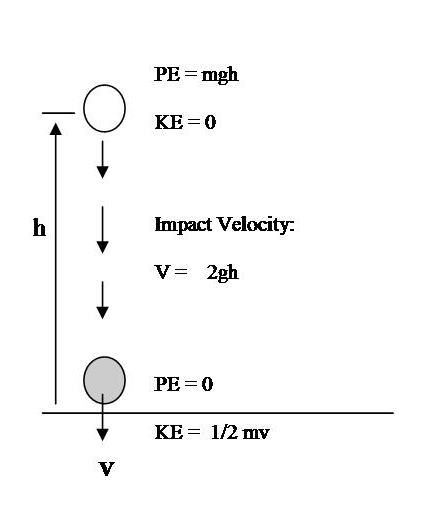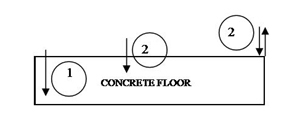
MECHANISM OF INJURY REPORT:
Slip and Fall on a wet floor.
This is another actual report that was submitted to the Ohio BWC Industrial Commission on behalf of my patient. The employer hired their own doctors to perform and independent medical evaluation on this patient. In spite of the positive MRI findings and radiating pain caused by the injured disc, the employer’s doctor stated that this patient was exaggerating her claims and that he found nothing wrong with her.
According to the patient, this doctor spent less than 5 minutes with her and all he made her do was stand up and bend over to try to touch the ground. His report indicated that he examined much more than what the patient stated he did. This happens all the time.
I wrote this report to prove that a slip and fall can cause significant trauma to the spine and submitted it on the patient’s behalf. I also attended this hearing specifically at 30 W. Spring street and testified to the nature of my report. This claim is now allowed for a right paracentral disc protrusion at L5-S1.
I would be happy to do the same for you if I believe your injury caused more than just a contusion or sprain. Call me to discuss your situation.
Dr. Larry Van Such, DC, BE, EE
2240 Morse Road
Columbus, Ohio 43229
Phone: (614) 428-9310 Fax: (614) 428-9407
August 4th , 2010
RE: Injured Worker (Female)
Claim No.: 08-111222
D.O.I.: 04/30/2008
MECHANISM OF INJURY:
Slip and Fall
ADDITIONAL ALLOWANCE REQUEST:
L5-S1 Paracentral Disc Protrusion, Right
To whom it may concern:
Injured worker stated she slipped and fell on a wet floor while at work. She stated she experienced immediate lower back pain and shortly thereafter her right leg and foot went numb. These symptoms have continued through to the present day.
In order to calculate the amount of force generated to her spine at the moment of impact, we need to know a) how much the patient weighs, b) how much distance was traveled between the part of the body that struck the floor to the floor itself, c) was there any possibility to break or slow the fall, such as grasping a handrail or piece of furniture on the way down and d) what type of surface did the patient land on; was it concrete, dirt etc.
Stats:
A) Patient was weighed at 150 lbs. or 68.18 kg.
B) Patient fell on buttock unimpeded to ground. Distance approximately 1 meter.
C) Unimpeded to the ground.
D) Fell on concrete floor.
Force Calculation:
Even though the application of conservation of energy to a falling object allows us to predict the impact velocity and kinetic energy, we cannot predict its impact force without also knowing how far it travels after impact. The diagrams below allow us to create a mathematical model of this mechanism.

If an object of mass = _______________ kg (1 kg = 2.2 lbs) is dropped from a height h = __________ meters, (1m = 39.39 inches. This is the height used in the injured worker’s case since this is the approximate distance from the body part that hit the ground to the ground itself. The velocity just before impact is calculated as follows:
V = 2gh or V = 2 x’s 9.8m/s x’s 1m
V = 4.427 meters/second.
Note: This is a conservative or minimum velocity since it takes into consideration the object started out at rest. You could realistically add between 1-3 mph to this since this is the typical pace a person walks. 1mph = .44704 meters/second. This number could be realistically added to the velocity at the time of impact such as:
V = 4.427 + .44704 = 4.874 meters/second.
For the sake of this mechanism, no additional speed will be added.
Calculating Kinetic Energy, KE:
KE = 1/2 mv2 J
KE = 1/2 (68.18 kg) x’s (4.427 m/s)’2
KE = 668 Joules. This is the kinetic energy when the starting velocity is 0 m/s.
Now, this alone does not permit us to calculate the force of impact. If, in addition, we know the distance “d” traveled after impact, then the impact force may be calculated using the work-energy principle.
There are three possible choices of distance “d” to choose from:
1) Object (patient) penetrates the surface resulting in smaller impact force
2) Object (patient) hits a harder surface resulting in less penetration.
3) Object (patient) bounces back upward creating an impact force greater because of the change in momentum.
The most reasonable choice for distance traveled after impact is #2. This accounts for deformation that takes place within the body as there would be no measurable deformation taking place in the concrete. Since the patient stated she fell on her buttocks, we can use a deformation distance of approximately 0.1 meter (about 4 inches).

Average Impact Force = F = KE/d. Therefore, the impact force the patient’s spine was subjected to is:
F = 668 J / 0.1 m = 6,668 Newtons.
1 Newton = .2248 lbs. Therefore, 6,668 N = 1,498 lbs.
Protective mechanisms:
If any of the body’s protective mechanisms are inhibited, then any amount of force, even as low as 5 lbs, acting at a specific level in the spine can cause significant and lasting damage. Protective mechanisms would include the body’s supporting musculature guarding the spine. If muscles give out due to the load, they will tear and subject the spine to serious injury. Ligaments then bear the majority of force, become exposed and tear further subjecting the spine to injury. If that occurs, then the disc will be exposed.
Since it has already been established that the injured worker was diagnosed with a lumbosacral sprain, it is reasonable to assume that her disc was exposed and subjected to this force.
Intervertebral joint motion: The intervertebral joint (one disc and two facet joints) is a type of universal joint with six degrees of freedom; three of translation (sideways, backwards-and-forwards, and up-and-down) and three of rotation (side-to-side), bending forwards and backwards, and longitudinal rotation). Typically, however, the joint does not perform simple movements in isolation, but always couples one translation movement with one rotational movement, such as forward bending and left rotation. If these coupled movements occur out of the normal range of motion for which a patient is unable to remain in control of their movements, muscles weaken and expose the patient to serious injury.
Conclusion:
The injured worker’s mechanism of injury would easily have subjected her to coupling motions in her lumbar spine beyond her control as it is one of the reasons she lost her balance and fell in the first place.
Therefore, it is my professional opinion, and within a reasonable degree of chiropractic and engineering mechanics certainty, that the injured worker’s mechanism of injury was significant enough to cause an L5-S1 disc protrusion at the time of the injury. This additional finding is also consistent with all of her clinical findings and should be added to her claim.
Respectfully submitted,
Dr. Larry Van Such, DC, BE, EE
Doctor of Chiropractic, 1994-Present
Bachelor of Engineering, Youngstown State University, 1986
Major: Electrical Engineering
Senior Controls Engineer: United Technologies Corporation
Pratt & Whitney Aircraft: 1986-1991
References:
Text: Engineering Mechanics-Statics
Hibbeler, 3rd Edition
Dept. of Civil/Environmental & Chemical Engineering
Youngstown State University, Youngstown, Ohio.
Georgia State University
Physics Department.
Journal of the Royal Society of Medicine
Volume 79, February 1986, Pages 100-104.